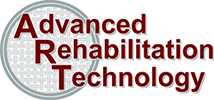Our Director of Technology, Bob Klopfenstein, worked at a corrugated steel culvert plant for one of his summer jobs several decades ago. He learned a lot with this early exposure to the industry and culvert knowledge has served him and our customers well throughout the years. “The galvanized steel came in various thickness and lengths,” said Bob. “Small culvert diameters were made with a single-rolled length of steel, but the larger diameters were made from multiple sheets riveted together. The culverts I helped manufacture back then have been in the ground for a while now, and I wonder how they are doing. Chances are, they’re starting to show their age.”
Bob expanded on the ins and outs of what affects the structural integrity of a culvert. “In the upper portion of the culvert there is typically leakage at connecting joints. Leakage in any amount more than a weep has probably brought backfill dirt with it, potentially causing a void in the surrounding soil, which will affect the structural integrity of the roadbed above. Additionally, the galvanized coating is long gone, exposing the bare steel, which is rusted and corroded and leading to more structural issues. Many decades of scour and abrasion have caused the invert to corrode and degrade, in many cases exposing rocks and soil beneath the structure.”
This condition seriously affects the culvert’s stability because the inherent hoop strength of a round structure is lost. It also has the potential for catastrophic failure because once the hoop strength is gone, it negatively affects the culvert’s ability to resist the weight above. In addition, when the culvert’s invert is lost, the bedding materials underneath are no longer providing a support function, which causes them to enter the stream of water and wash away.
“This is potentially a very serious and expensive situation, which is why we want to bring awareness that the summer rainy season will be here before you know it,” continued Bob. “And since when it rains, it pours, now is the time for your annual culvert inspection before there is so much flow you can’t observe the culvert invert condition.”
If your culvert is showing signs of wear, OBIC 1200 is a cost-effective solution for extending the useful life of corrugated steel culverts. How does it work? A poured-in-place concrete invert liner is installed to seal the culvert invert. This prevents additional backfill loss and provides a protective layer between the abrasive flow and the steel material. The crew will then blast-clean the interior surface to create a clean adhesion profile followed by the spray-applied application of the semi-structural OBIC 1200 Hybrid Polyurea Lining System. This process will restore the hydraulic capacity, provide structural enhancement, and add years of operational life versus the high-cost, traffic disrupting, and constituent-annoying alternative of total replacement.
ART is an OBIC certified installer and can offer high-quality, cost-effective alternatives to the replacement of sewer pipes and manholes. OBIC lining systems are designed to extend the life of the structure by 50 years or longer, and all ART-installed multi-layered systems and OBIC Armor systems include a 10-year manufacturing warranty. For more information, or to schedule a free, customized product demonstration, call 419-636-2684.
